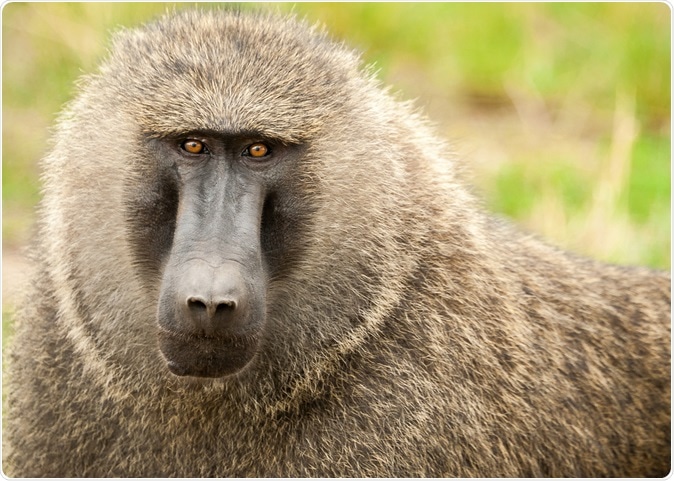Last weekend, four baboons that were held at a Texas biomedical research facility for research purposes, escaped briefly before they could be captured again. These intelligent animals successfully used an upended barrel to climb to their freedom.

Olive baboon. Image Credit: Brina L. Bunt / Shutterstock
The facility was Southwest National Primate Research Center (SNPRC) that is part of the Texas Biomedical Research Institute in San Antonio. The facility holds around 2,500 animals for research and this includes 1,100 baboons as well. These baboons are all part of experiments on heart disease, diabetes and obesity. Because of their close resemblance to humans, the baboons have long since been used in science. 133 of these animals were not in use currently for any experiment. They were allowed inside an open air enclosure to play.
These four escapees were playing within the enclosure that is surrounded by infolding walls that prevent the monkeys from escaping by jumping put. They rolled up a 55 gallon barrel and put it up right next to the wall, climbed up on it and jumped right out of the enclosure to escape from TBRI facility. The barrel contained grains stored for the baboons. Some of the experts said that rolling the barrels down mimicked the foraging behaviour these animals have in the wild.
Once outside the facility, one of the baboons turned back to return to the facility. The other three continued on their way to try and escape the fencing around the institute. According to a statement from the facility, employees successfully coaxed the baboons back into the enclosure and now they are all doing well after their adventure. SNPRC has been fined for violations.
This incident has highlighted the issue of protection and proper treatment of these animals. April 19th being Biomedical Research Awareness Day the issues regarding animal research and role of animal caretakers in biomedical research towards treatment and cure for human diseases.
According to John Bernal, DVM, attending veterinarian at SNPRC this incident showed the preparedness and training of the animal care workers at the biomedical research facility. “Our animal capture team and the entire animal care team acted diligently and followed protocol to locate, secure and account for the baboons,” he said. He explained that the team was trying to ensure that the escaped animals were not hurt by the traffic on the Millitary drive.
Lisa Cruz, Assistant Vice President for Communications said the facility has been working with and caring for baboons for the last 50 years and the facility has baboons for some eight generations now. She explained that these animals were critical to research on life saving drugs and vaccines for heart disease, diabetes, infections etc. She said that these research activities benefit millions of people worldwide.